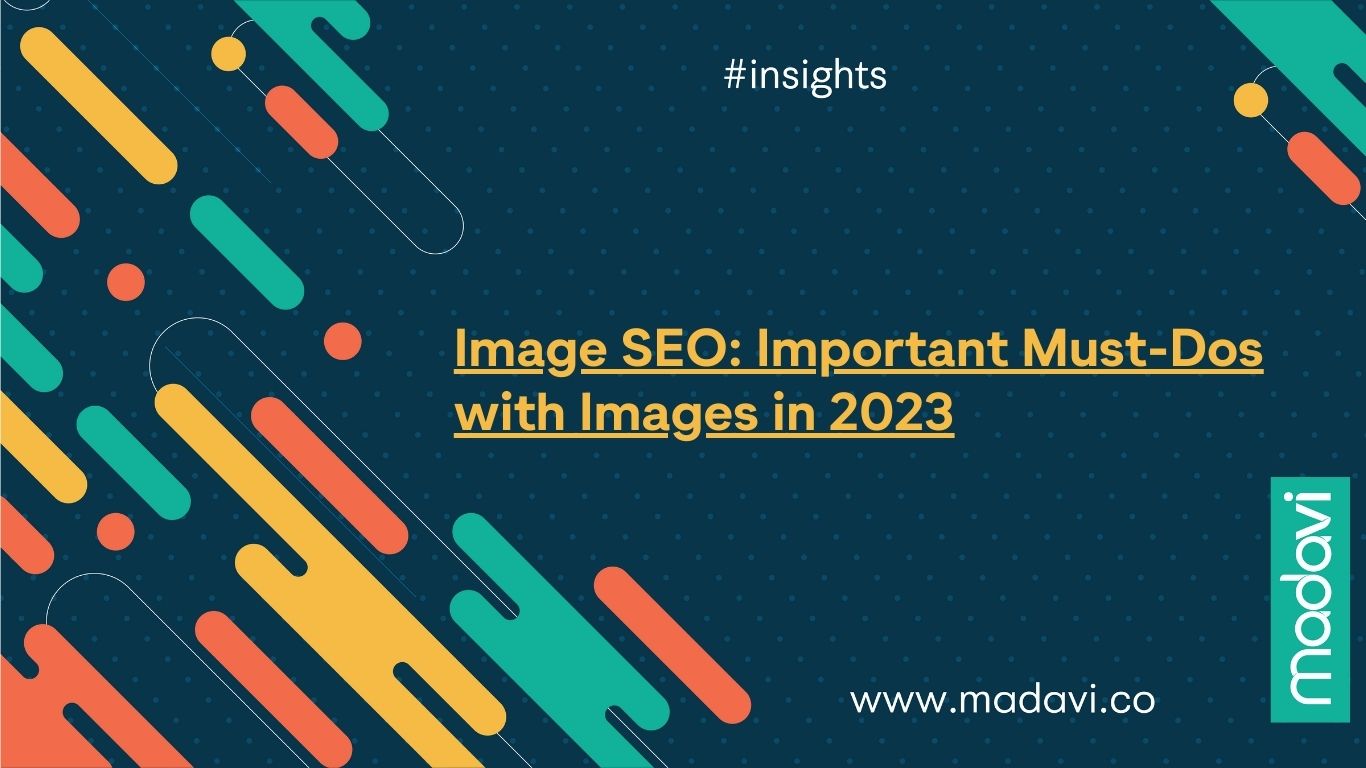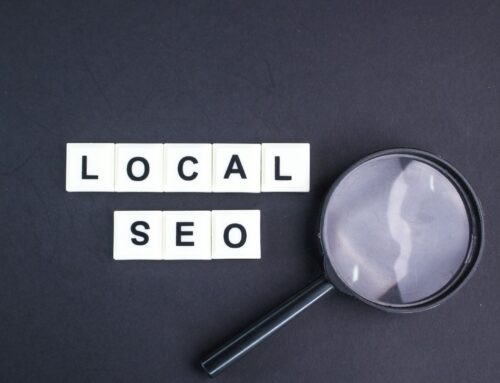Table of Contents
As a business, any type of content you publish is usually intended to achieve key primary goals. One of these goals is to increase traffic to your website.
To achieve this goal, it is imperative to optimize your content. It is also important to remember that content comes in various forms.
Click here for types of content.
Images also form an essential type of content that you can optimize to increase traffic to your website.

Importance of Using Image SEO
Today’s audiences can be described as highly visual. One of the reasons for this is the decreased attention span they have. Hence, you have the uphill task of maintaining their attention when they access your content.
There are many ways to achieve this, such as writing engaging content, storytelling, and, the most significant, including images in your content.
If there is one principle you should remember when publishing your content, especially when it is in written format: always use images. Further, it is not enough to just use images. There is also the principle of ensuring the images you use are the right ones.
Therefore, you have the task of finding the right images to include in your content. Adhering to these principles can have a good return on investment for your marketing efforts.
According to SemRush, 22.6% of searches on Google are image searches. A simple search of “how to add images in your blog content” confirms this statistic as shown below:
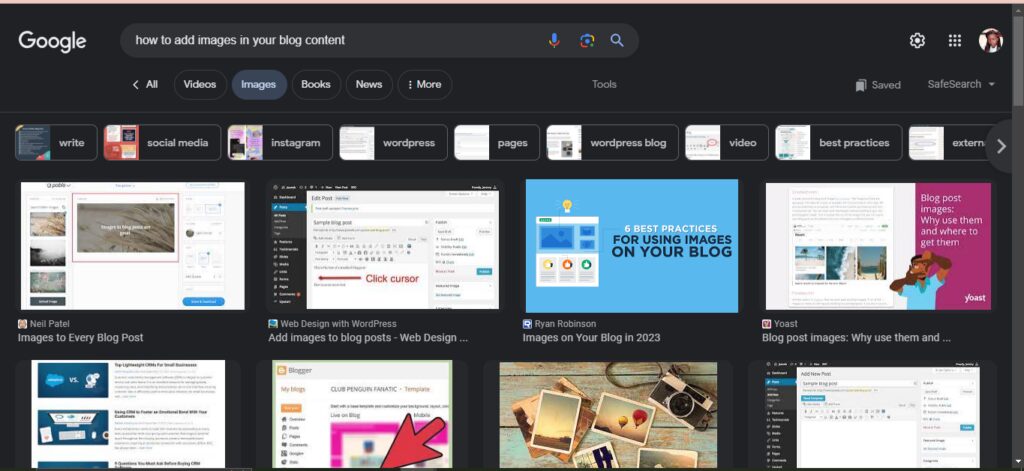
This means that finding and using images correctly in your content can improve your ranking, which will likely translate to more traffic to your website.
Here, you can already see the significance of image SEO.
In 2023, Google is also showing images on its regular search engine results page. The assumption is that this helps users better understand what they are looking for. From there, they can click on your website for more information, leading to more engagements.
More specifically, images, when optimized, increase on-page SEO and ranking on the Google images results page. From this perspective, traffic to your website will be coming from different directions.
What is Alt Text and Why is it Important for Image SEO
One of the best ways to optimize your images for Google crawlers to find and show them to users is through alternative text, commonly referred to as alt text.
The most basic description of alt text is that it is a written description of an image you include in your content. This is why sometimes alt text is referred to as alt tags or alt attributes.
From the above description, alt text helps your content rank by telling Google what the image is about, using specific keywords.
Below is an image example of how to add alt text when using WordPress:
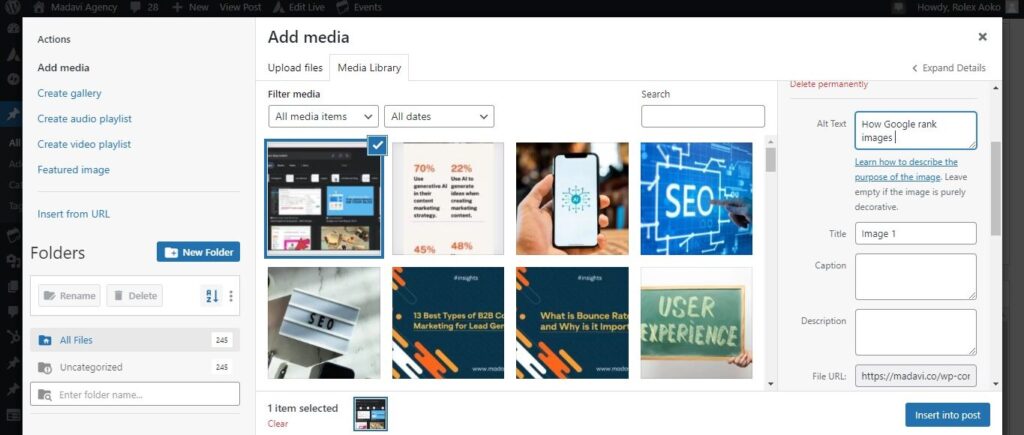
When Google knows what your image is about, there is a high likelihood for users to access your site in search of the image or its context, resulting in traffic.
Therefore, you should consider alt text as the right way to include images in your content for positive results.
When an image lacks an alt text, it often appears broken when a user tries to load it. This can cause a high bounce rate, which is counterproductive for your site.
Hence, alt texts are not for users but for Google’s search crawlers to find your images and show them to users.
Consider alt text as the keywords for images since it is also advisable to include keywords in the alt text.
8 Must-Dos for Image SEO Ranking in 2023
- Resize Your Images
Slow loading speeds are a turn-off for users, leading to high bounce rates that adversely affect customer engagement and conversions.
Images present one of the leading reasons for slow loading speeds, especially when they are heavy. To effectively use image SEO, you should strike a balance between the file size and format of the image used.
For example, images in the PNG format, despite having high quality compared to other formats, have larger file sizes that take time to load, resulting in slow speeds and high bounce rates.
On the other hand, images in the JPEG format load faster because they are of smaller file sizes. However, they tend to have low quality.
This is where balancing file sizes and the quality of the images you use for your SEO comes in. The best approach is to resize your images by either minimizing the file size while limiting quality degradation or making image dimensions smaller.
Certain tools can help with the process, including WordPress Plug-ins for image optimization and other image optimization tools.
- Name Images Correctly
Google’s Image SEO Guide emphasizes the importance of using descriptive filenames. This tells search engine crawlers what the image is, thereby increasing the chances of organic traffic.
Therefore, the recommendation is to use specific descriptive names for every image you use in your content. While doing this, use hyphens instead of underscores, as recommended by Google, as a way of separating the words.
- Compress images
Other than resizing images, compressing them is another way to reduce their file size and decrease page load times. Compressing the image eliminates any redundancy in the image data to minimize the file size while maintaining an acceptable quality.
This increases the efficiency of the image in illustrating your content, translating to image SEO.
You can use various open-source tools, such as TinPNG, Optimizilla, Smush, and ImageOptim, among others, to compress your images.
- Create an Image Sitemap
An image sitemap includes a URL to the images you have included in your content. It increases the chances of your images showing in search results when a user is looking for information related to the image.
More specifically, Google and other search engines will easily discover your images and improve your image SEO ranking when you have a dedicated sitemap that includes URLs.
The URLs you include in your image sitemaps can either be your web pages or other domains.
Regardless, you should know how to create an image sitemap, with Google’s Image Sitemaps guide and example being a good place to start.
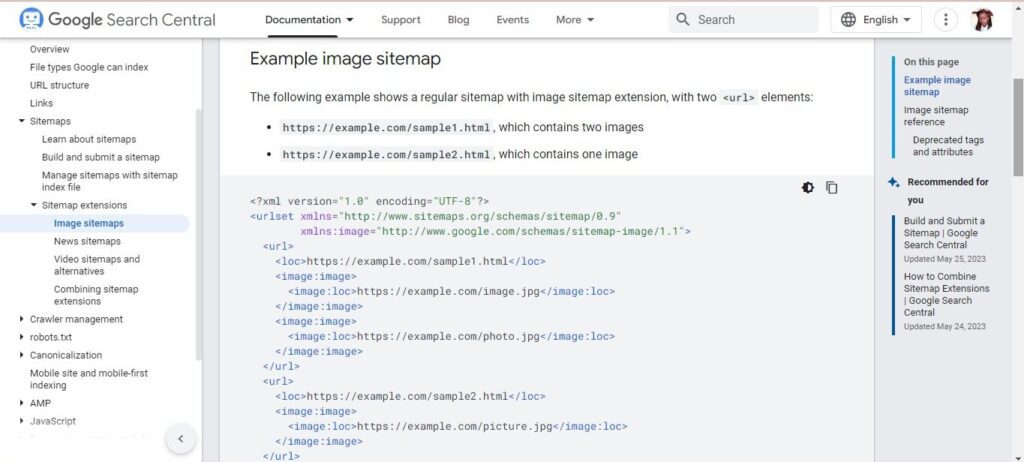
If you find all this challenging to do, together with Google’s recent announcement that some sitemap extension tags might be eliminated, you can always seek the services of a marketing agency to help you integrate this vital image SEO best practice into your marketing strategy.
The secret is to keep up with the new and ever-emerging image sitemap best practices, which can prove difficult if you manage your own sitemap.
- Use Captions to Describe Images
The goal of any SEO technique is to optimize your content to improve organic ranking by doing all you can to make the content visible to search engine crawlers.
Using captions to boost image SEO gives you an additional opportunity to achieve this aim. Captions are particularly necessary if you have a visual-heavy website because readers will need to understand the context of the image.
However, captions may not be needed if used in a context where readers can easily depict the meaning of the image. For example, an image caption may not be necessary for a blog post addressing a given topic because it will be self-explanatory.
Based on these perspectives, you ought to use good judgment when it comes to adhering to this best practice of using captions.
You have to decide whether adding a caption or leaving it to readers to decipher the meaning of an image on their own will be worthwhile.
- Do not Just Use Stock Photos, Post Original Images
Readers and search engines have a preference for original content, with images being no exception. Thus, it is vital to use unique and original images if you are hoping that they would rank on the results pages of search engines.
Using original images in your content is particularly important if you are posting visuals of your product or if your website is e-commerce oriented.
According to data presented by SemRush, 50% of online shoppers admit to relying on images to make purchase decisions. You can already determine the impact of using original images to optimize your content from this statistic.
Types of Original Images to Consider
Original images can be in the form of product pictures, animated images, graphs, and infographics created in-house. You can leverage tools such as Canva to improve image SEO and avoid the risk of being buried under high-quality and better images presented by competitors.
Simply put, you want to optimize these images to stay ahead of competitors when crawlers present search results to users. This qualifies as image SEO.
- Use Images as a Backlinking Opportunity
We have emphasized the need to incorporate high-quality and unique images to help search engines, and readers identify them and generate traffic to your website.
There is an additional advantage to using high-quality images, which is the opportunity for other websites to use them in their own content and earn backlinks for you.
Original images, such as graphs and infographics, have a high probability of earning your website a backlink, especially if search engine crawlers consider the information useful based on the keywords used to describe it.
This means that images have a direct impact on achieving marketing goals, such as increasing sales, generating leads, and increasing traffic to your website.
You just have to make sure the images you use in your content are high-quality, valuable, and unique.
- Use Responsive Images
Today’s users rely on different devices when conducting a search. Therefore, optimizing your images to be responsive on different devices is a critical image SEO best practice.
The most important factor to consider is to optimize your images for mobile devices since mobile searches have a significant impact on search engine ranking and user experience.
Mobile devices are also responsible for the highest number of bounce rates if users find the pages unresponsive, with the type of images used playing a key role in this unresponsiveness.
Hence, to ensure your images have a positive effect on your SEO, user experience, and brand perception, optimize them for all devices.
Conclusion
As a marketer, you should know that diverse elements contribute to the optimization of your content. Images present one of these elements, making it vital to pay attention to image SEO when you incorporate any into your content.
This article has identified different best practices to optimize your images to improve organic traffic and help you achieve your marketing goals.
Whereas the list is not exhaustive, it offers a good place to start by providing the most fundamental factors to consider. When integrated effectively, image SEO can positively impact your marketing goals.


